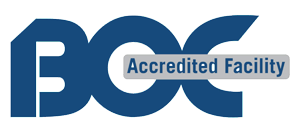In adult-onset scoliosis, the lateral curvature in the spine may be as mild as ten degrees or it may be as severe as one hundred degrees or more in other cases. Although scoliosis itself is not a painful condition, symptoms can become present due to normal age-related degeneration of the spine over time. When adult-onset scoliosis occurs, it can also lead to a change in the body’s physical appearance, although this depends on the severity of the condition.
Causes of Adult-Onset Scoliosis
The cause of adult-onset scoliosis can vary significantly depending on the type of scoliosis you are dealing with. However, in many cases, this condition occurs simply because of age-related degeneration of the spine as you get older, which is completely normal. It can also simply be a case of pediatric scoliosis not becoming apparent until adulthood. When scoliosis is found or discovered after puberty, it is typically referred to as adult-onset scoliosis.
Symptoms of Adult-Onset Scoliosis
In most cases, adult-onset scoliosis does not cause symptoms however, pain can sometimes develop over time. For example, back pain can become prevalent due to the development of arthritis, patients not being able to stand up straight, or the core muscles becoming weak or losing conditioning over time. It may also put pressure on the nerves in the lumbar spine, which can sometimes result in pain, weakness, and/or numbness developing in the patient’s legs.
Treatment Options for Adult-Onset Scoliosis
Adult-onset scoliosis is usually treated non-surgically. Doctors will typically observe the patient over time, recommend over-the-counter pain medication to help you manage any pain symptoms successfully, and advise physical therapy to build strength and improve flexibility. In fact, physical therapy is often the most effective treatment when it comes to managing this type of scoliosis. With the right exercises, you can quickly improve posture and build more abdominal strength to support your spine. Low-impact exercises such as swimming or yoga can also be useful in helping patients to stay fit and flexible.
Surgery can sometimes be required for treatment. However, because of the risks and potential complications associated with spinal surgery, this is usually a last resort. Should pain in the ack or legs become unbearable, there is a significant spinal imbalance or the patient’s overall quality of life is being affected, surgery may be considered.
Contact Our Team At Synergy Orthopedics Today
At Synergy Orthopedics, we take great pride in providing our patients and clients with the high-quality orthopedic devices needed to manage adult-onset scoliosis. With the help of our team, you can be sure that you will have access to the resources you need to improve your range of movement, increase strength and decrease pain as you move forward. Reach out to Synergy Orthopedics today to find out how we can help you to live with adult-onset scoliosis and prevent this condition from holding you back moving forward.

